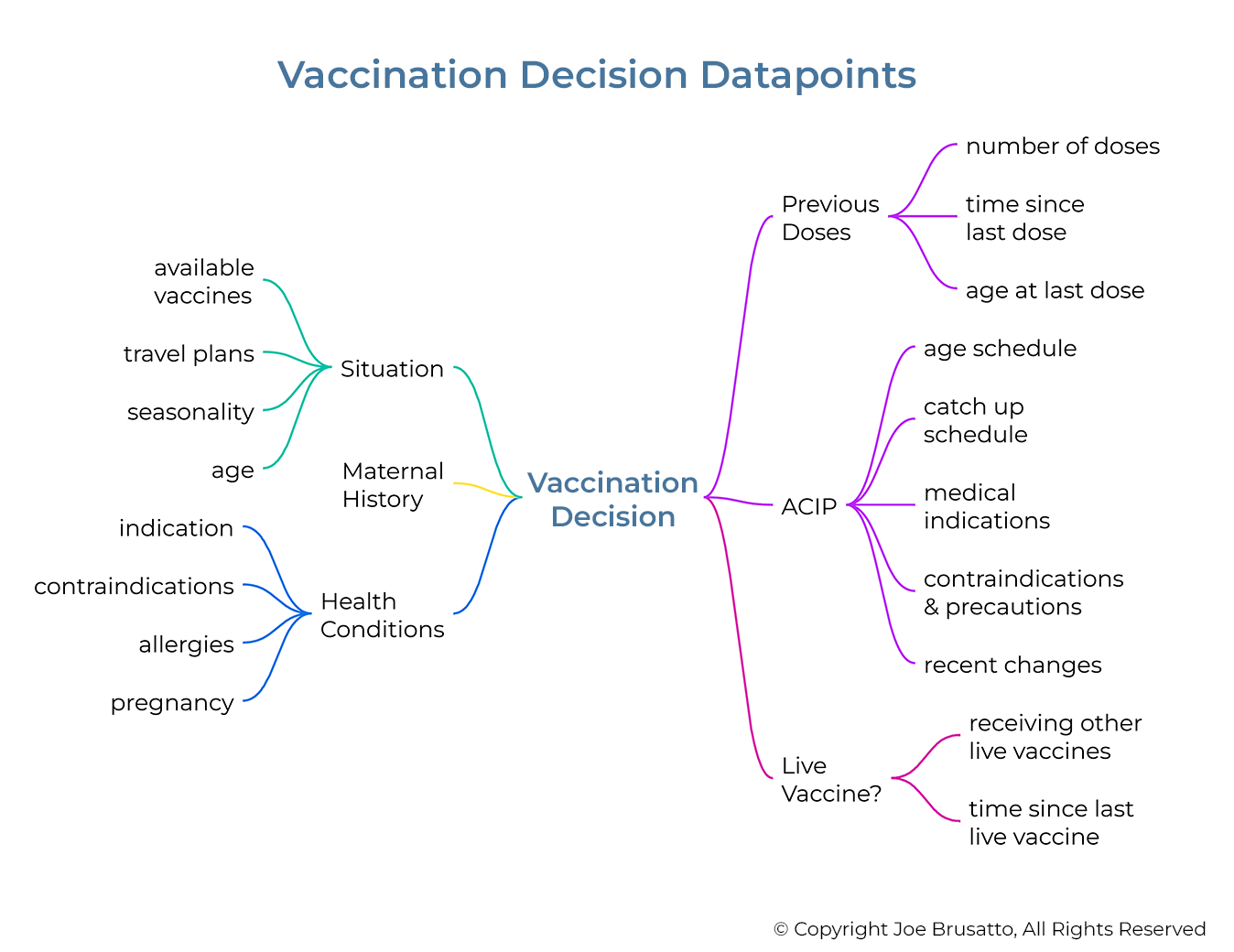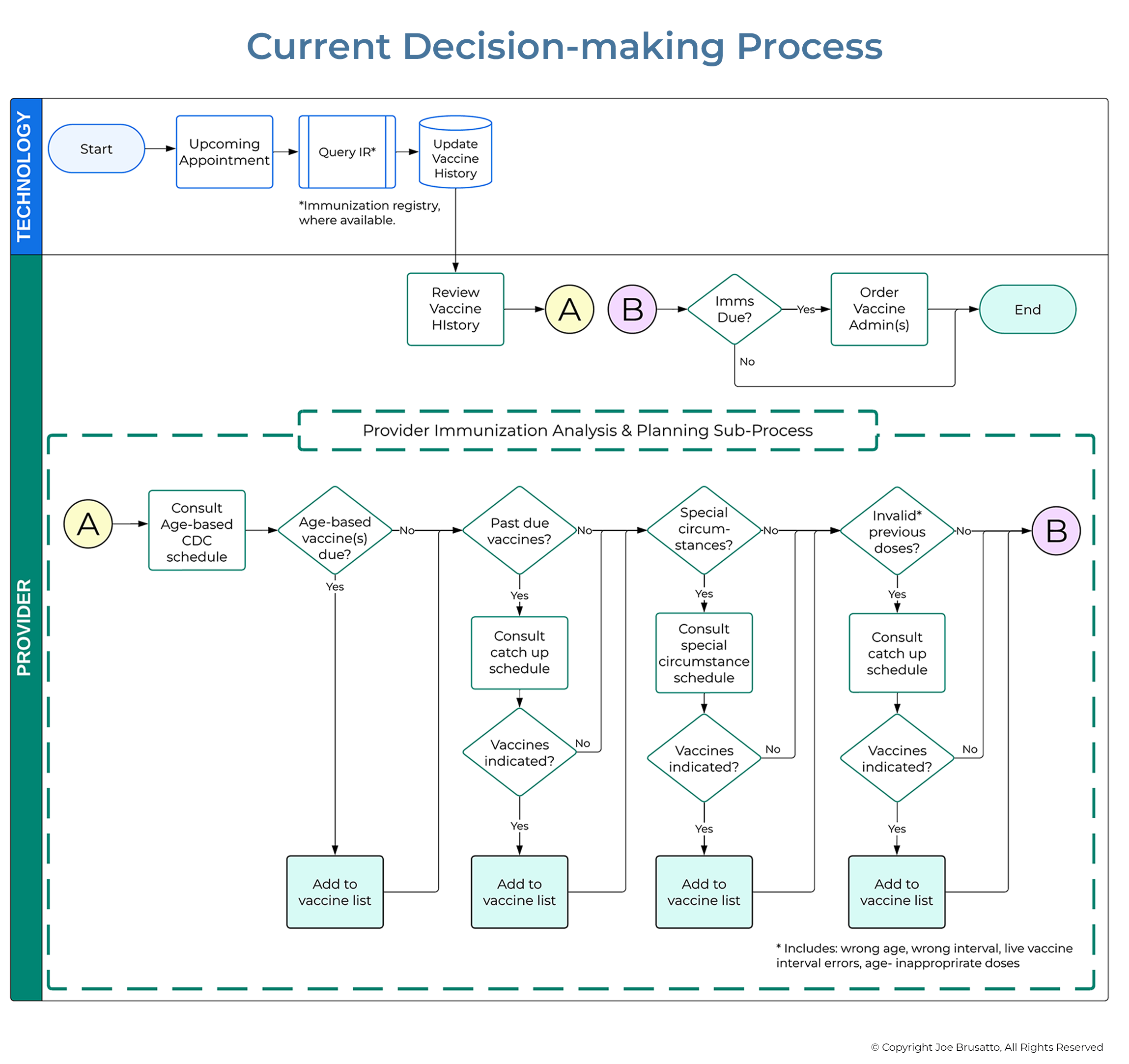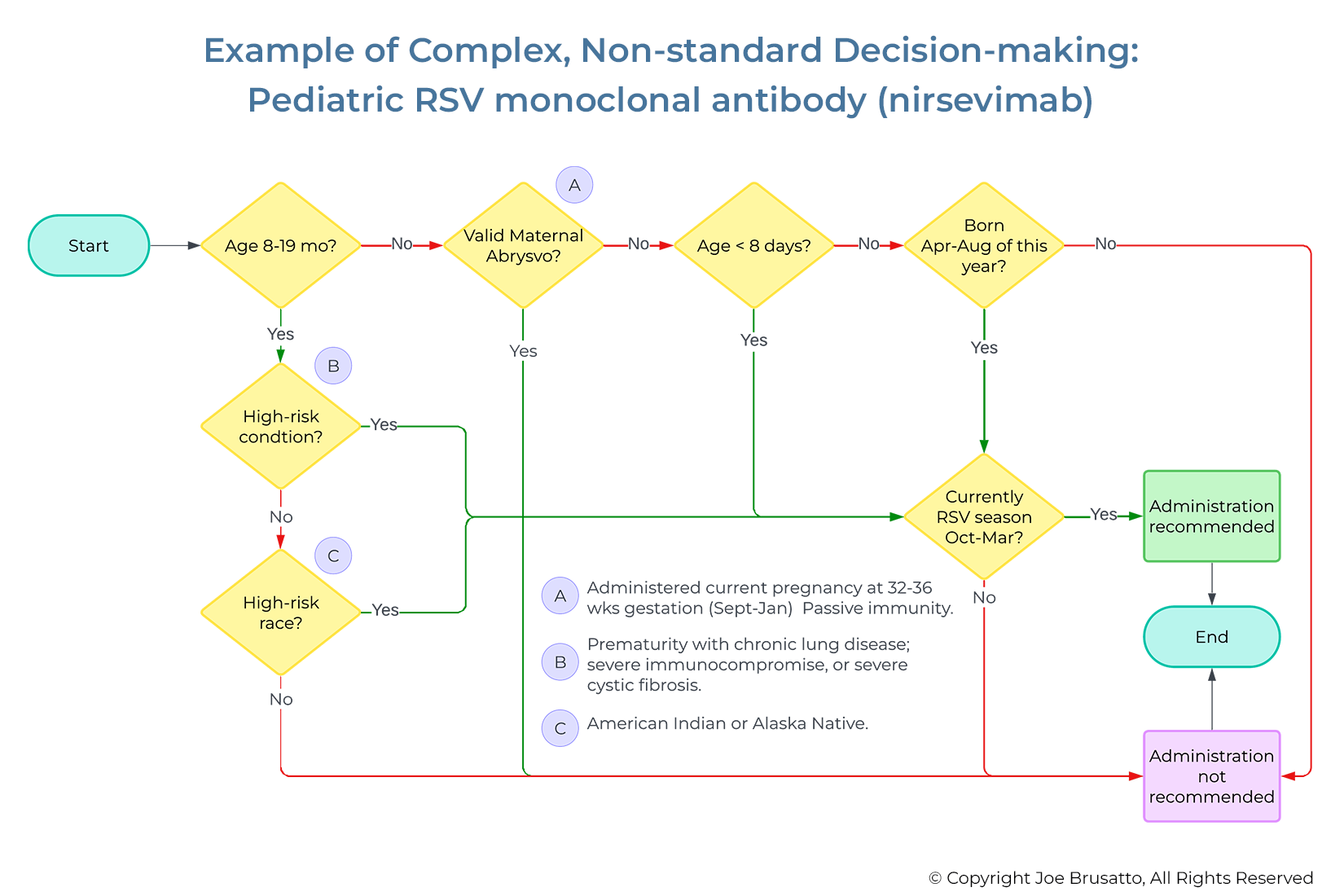The Problem and its Context
Pediatric Immunization Management
Analyzing immunization records, determining immunization status, and planning vaccinations is a high-frequency, complex, cognitively burdensome task for primary care providers. The task involves a minimum of five steps per immunization, each referencing separate Centers for Disease Control and Prevention (CDC) publications and requiring the analysis of multiple data points (CDC, 2024b). The task is further complicated by the prevalent use of combination vaccines, which confer immunity to multiple diseases and have different timing and booster dosing requirements. Without readily accessible immunization management tools, this significantly burdens healthcare professionals, affecting their daily work and patient care.

The process diagram below illustrates the complex decision-making process involved in determining what immunizations, if any, are indicated at the current visit.
To see how this process differs when using Smart Shots, see the process diagram in the Smart Shots Overview.

This is further complicated by the frequency with which vaccination recommendations change and the complexity of some guidelines. One such example is the recently added respiratory syncytial virus (RSV) monoclonal antibody (nirsevimab) recommendations for infants, which differ based on RSV seasonality, maternal vaccination history, age, high-risk conditions, high-risk race, and whether the infant is entering their first RSV season before the age of 8 months (Jones et al., 2023).

While clinical decision support (CDS) solutions cannot replace clinical decision-making, offloading routine, automatable portions of the process to CDS can significantly reduce cognitive burden. This frees up working memory resources for the more complex tasks that require human cognition.
Each day, the practice's providers see hundreds of pediatric patients, and each encounter represents an opportunity to assess immunization status and close immunization gaps. However, an undetermined number of vaccination opportunities are missed due to the problematic nature of electronic health record (EHR) immunization functionality. The limited immunization features available in many EHRs result in unnecessary provider cognitive burden, increased risk of errors (Institute for Safe Medication Practices, 2022), and undetected invalid vaccine doses related to dose timing (Kirtland et al., 2019), leading to increased costs and patients who are under-immunized. From the provider's perspective, increased EHR cognitive burden contributes to burnout (Budd, 2023), increases task time, and distracts from direct patient interactions.
Read more
Read more about the context and implications of the problem.
Public Health Importance
Despite a focus on improving vaccination rates as part of the Healthy People 2030 initiative, vaccinations measures in the U.S. have remained unchanged or in some cases, worsened.
Read moreVaccination Errors
Over one third of reported vaccination errors are a type that could potentially be improved by making information and decision support available at the point of care.
Read moreThe Role of Technology
EHR utilization for office-based providers has increased by 400% in the past decade. The technology, however, has failed to live up to its promises. Nowhere is this more apparent than in immunization management.
Read morePatient Implications
Under-immunized patients face an increased risk of illness and, in the case of immunization error, may be unaware that they require re-vaccination.
Read moreImpact on Providers
Immunization management is a complex multi-step task with a degree of complexity that can quickly overwhelm a provider's working memory resources, contributing to to decision fatigue, errors and burnout.
Read moreHealthcare System Implications
Issues with immunization management have far-reaching implications for the healthcare system at the practice, organization and system level.
Read more